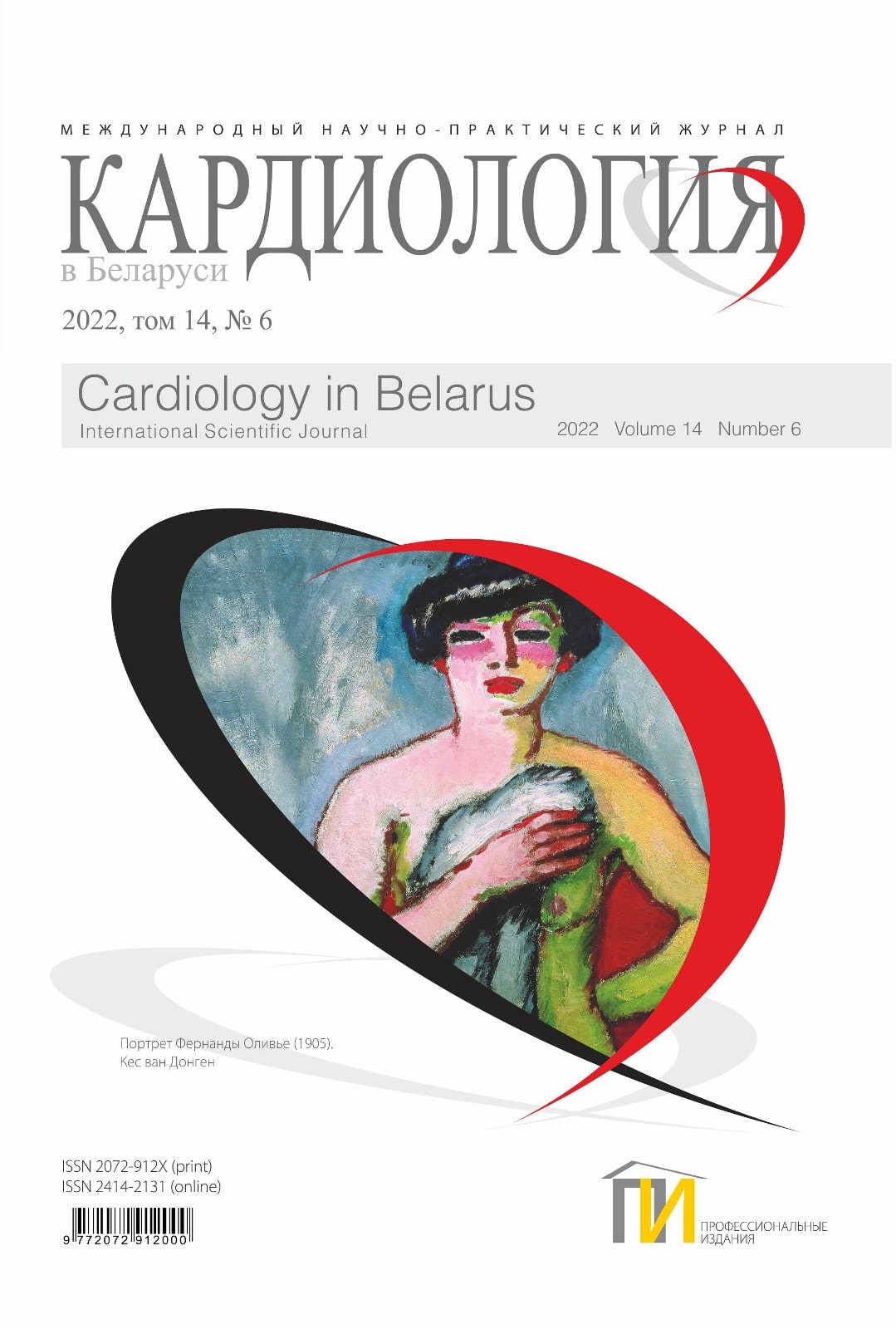Cardiology in Belarus
2022, volume 14, № 6
The electronic edition – Free!
Print version
In this issue:
Original Researches
Quality of Life in Patients with Low Ejection Fraction after Various Techniques of Open-Heart Myocardial Revascularization
Gender Characteristics of Postoperative Cognitive Dysfunction in Patients Undergoing Coronary Artery Bypass Grafting
Small Aortic Annulus: Aortic Allografts vs Perceval S
Results of Conservative Treatment Strategy in Patients with Unstable Angina and Low-Risk GRACE Score
Practical Significance of Electrocardiographic Markers of Ventricular Arrhythmias in Patients with Heart Failure and Atrial Fibrillation
Comparative Characteristics of Drug Therapy in Patients with Coronavirus Infection against Cardiovascular Disease in Clinical Practice of City Polyclinics and Infectious In-Patient Department
Development of Approaches for Creating Databases of Patients with Circulatory Diseases in Organization of Medical Care for Atrial Fibrillation. Part 2: Results of Care Quality Monitoring Based on Atrial Fibrillation Patient Databases Information in Cardioembolic Complications Prevention
Mortality Analysis Due to Circulatory System Diseases in the Gomel Region in 2009–2019
Reviews and Lectures
New Clinical Bayes Syndrome: Definitions, Epidemiology and Clinical Significance
Secondary Hyperlipidemia and Atherosclerosis in Patients with Thyroid Pathology
Aerobic Physical Training in Patients after Combined Coronary Artery Bypass Grafting and Correction of Acquired Non-Rheumatic Valvular Heart Disease
Prevention of Cardiovascular Diseases: New Opportunities and Prospects
The Use of Medicines
Patient with Arterial Hypertension at High Cardiovascular Risk: Focus on Telmisartan
Editorial

Член редакционной коллегии, заведующая лабораторией хронической ишемической болезни сердца РНПЦ «Кардиология» доктор медицинских наук
Суджаева Ольга Александровна
Суджаева Ольга Александровна
Уважаемые читатели!
Мир вокруг нас постоянно меняется: это каса-
ется и условий окружающей среды, и эпидемио-
логической обстановки, и факторов риска сер-
дечно-сосудистых заболеваний. Все это требует
постоянной актуализации наших знаний в обла-
сти патофизиологии болезней системы крово-
обращения, диагностических подходов, включая

